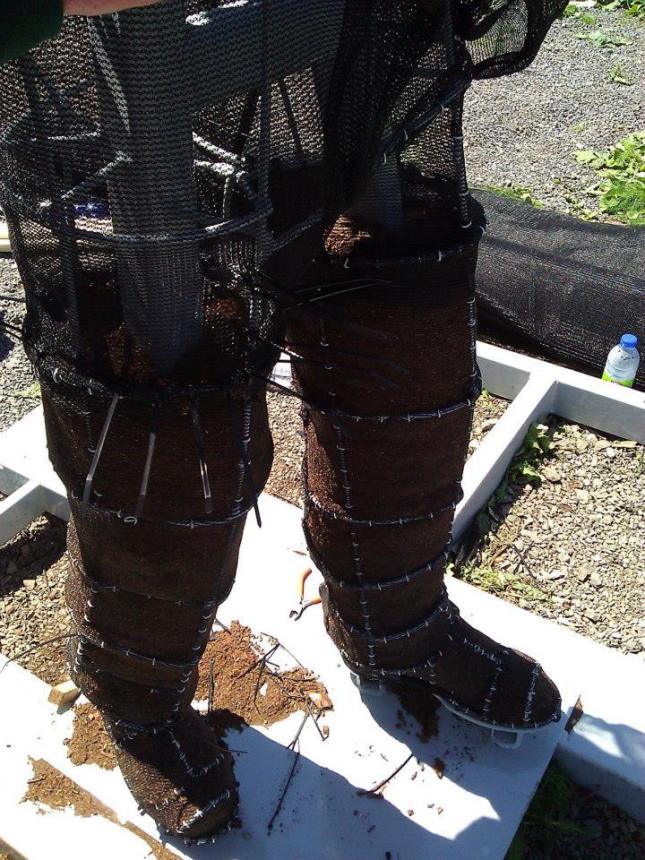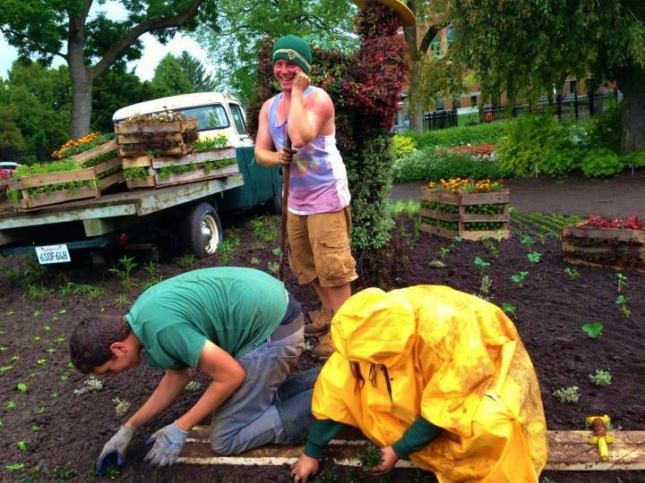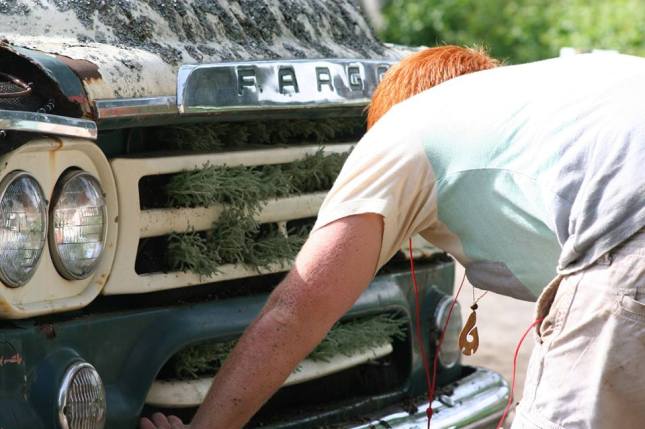Cal Poly Takes On Canada
Lauren Milliken, AEPS Student
A group of Cal Poly students and I went to Montreal to construct my senior project by participating in an international Mosaicultures competition. Mosaiculture is creating figures completely filled and covered with plant material. The competition was to create a landscape design that incorporated the theme of “Land of Hope.” Our team represented California in competition. Our goal was to design a scene that illustrated one of the defining characteristics of California: farming. California farms play a large role in the state’s economy, and we wanted to portray the connection between the farmer and land since agriculture plays a pivotal role in shaping our state’s economy. Our design revolved around an old farmer’s truck, and a father and son that represented farmers harvesting their crop. Stacked produce crates were also placed throughout the entire design to in order represent the symbol of California agriculture.

The group of Cal Poly students and a few faculty members all traveled to Montreal, Canada to construct the design at the Montreal Botanical Gardens.
The group of Cal Poly students and a few faculty members all traveled to Montreal, Canada to construct the design at the Montreal Botanical Gardens. The garden is world-renowned and consists of many types of beautiful gardens with smaller ones within them.
Although constructing our actual project was hard work, the group still enjoyed the time spent together working towards a common goal. The two figures were welded for us by the engineers while groups of about two people worked together to line the figure with plastic netting and then fill it with peat moss. In order for the plants to grow, and still maintain its shape, the media had to be packed down as much as possible, which proved to be the most tedious process in the design. After the figures were filled, the plants were installed by cutting holes in the netting big enough for plugs. We used various plant materials for different parts of figures like the overalls, shirt, jeans, hat, skin, and boots. The plugs were allowed grow into the figure and give them character. The rest of the plot had the truck with Mosaicultures filled crates and the ground was turned into rows of crops. We chose plants that mirrored actual crops grown in state such as echeveria that represented artichokes and begonia as strawberries. The rows were all plotted in different direction to give the area texture and depth.

The two figures were welded for us by the engineers while groups of about two people worked together to line the figure with plastic netting and then fill it with peat moss.

In order for the plants to grow, and still maintain its shape, the media had to be packed down as much as possible, which proved to be the most tedious process in the design.

In order for the plants to grow, and still maintain its shape, the media had to be packed down as much as possible, which proved to be the most tedious process in the design

After the figures were filled, the plants were installed by cutting holes in the netting big enough for plugs.

We used various plant materials for different parts of figures like the overalls, shirt, jeans, hat, skin, and boots.
All our hard work put into creating the Mosaicultures was well worth it: the plot looked beautiful, even better than what was created in the design process. I am happy to be part of this school trip to Montreal. Not only did I receive hands-on experience in building a Mosaicultures in one of the most beautiful, and diverse, cities in the world, I also learned the importance of positive team dynamics in group projects. Overall, the trip was a major success, and truly embodied the Cal Poly “learn by doing” philosophy.



















